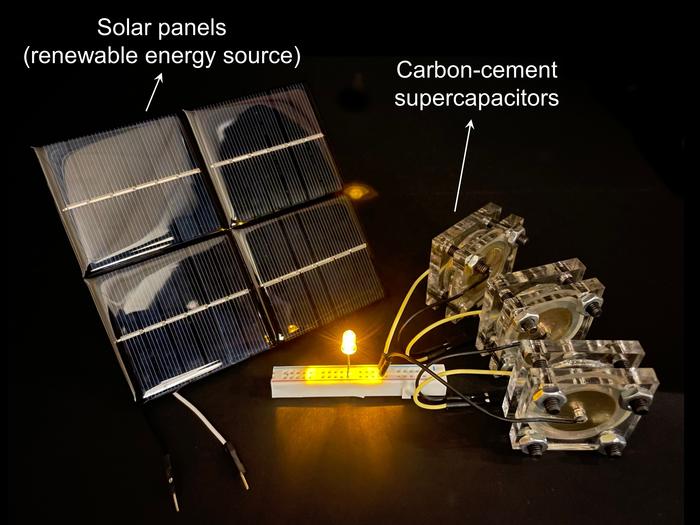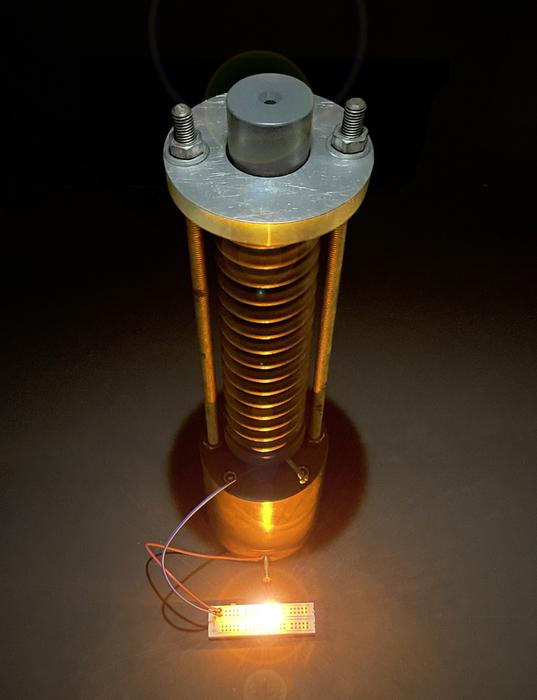
Ever imagine your home’s concrete foundation or the roadway beneath your tires could store energy? A team at MIT has not only imagined it but is already developing a solution to make it a reality. By merging cement, carbon black, and water, they’ve created a supercapacitor that could revolutionize how we store energy from renewable sources.
Reimagining common materials into high-tech energy storage devices
Often, answers to the most complex problems can be found by delving into the past. Cement, an age-old construction material, and carbon black, akin to fine charcoal, have been repurposed by MIT engineers to form the base of an innovative energy storage system.
How does it work? By combining cement, carbon black, and water, the team created a supercapacitor — think of it as a battery alternative — that can store electrical energy. For instance, your house’s concrete foundation could become an energy storage unit, capable of keeping a day’s worth of energy on standby.
You might be wondering how simple materials like cement and carbon black can morph into a high-tech energy storage device. To begin with, supercapacitors aren’t as complex as they might sound. Essentially, they are capacitors with a heightened capacity to store charges.
A capacitor is made up of two conductive plates submerged in an electrolyte and separated by a membrane. When a voltage is applied, the positively charged ions from the electrolyte gather on the negatively charged plate and vice versa, creating an electric field that can be stored and swiftly delivered when required.
But what makes the supercapacitors developed by the MIT team different? The cement-based material they’ve created has a dense, interconnected network of conductive material, resulting in a high internal surface area. By introducing carbon black into the cement-water mixture and allowing it to cure, the water reacts with the cement to form a branching network of openings. The carbon black infiltrates these spaces, creating wire-like structures within the hardened cement, essentially turning the material into a supercapacitor.
“The material is fascinating because you have the most-used manmade material in the world, cement, that is combined with carbon black, that is a well-known historical material — the Dead Sea Scrolls were written with it,” says co-author Admir Masic, a chemist at MIT’s Civil and Environmental Engineering Department.
“You have these at least two-millennia-old materials that when you combine them in a specific manner you come up with a conductive nanocomposite, and that’s when things get really interesting.”
Renewable energy reimagined

This kind of novel storage solution can significantly impact how we use renewable energy. Consider this: the main sources of renewable energy, like wind, solar, and tidal power, generate output at variable times. These times often do not align with peak electricity usage, necessitating the development of efficient energy storage systems.
Professor Franz-Josef Ulm, one of the leading MIT researchers, believes their technology is exceptionally promising, particularly because of the ubiquity of cement. A 45-cubic-meter block of this material could store up to 10 kilowatt-hours of energy, enough to power a household for a day. Plus, supercapacitors can be charged and discharged faster than batteries, making them more efficient.
The MIT researchers proved this is possible by building a tiny supercapacitor, made using this new method and measuring only about 1 centimeter in diameter and 1 millimeter in thickness. Each of these small supercapacitors could be charged to 1 volt, akin to a 1-volt battery.
The team successfully connected three of these supercapacitors to power a 3-volt light-emitting diode (LED). With this proof of concept, they now have plans to construct larger versions, starting with units resembling typical 12-volt car batteries and eventually progressing to a colossal 45-cubic-meter version that can store enough energy to power an entire house.
“You can go from 1-millimeter-thick electrodes to 1-meter-thick electrodes, and by doing so basically you can scale the energy storage capacity from lighting an LED for a few seconds, to powering a whole house,” Ulm said.
The applications of these massive supercapacitors stretch beyond powering households. Imagine concrete roadways storing solar energy and wirelessly charging electric vehicles passing by. This concept is already being developed in Germany and the Netherlands using standard batteries.
For structures away from grid power, such as remote homes or shelters, the cement supercapacitors could be charged by solar panels. The best part? According to Ulm, the system is scalable. The energy-storage capacity increases with the volume of the electrodes. By adjusting the mixture based on the desired properties for a specific application, the system can be tuned for optimal performance.
The researchers hope this innovation will usher in a new era for concrete in the energy transition, transforming it from a traditional construction material to a multifunctional component of our energy future.
The findings appeared in the Proceedings of the National Academy of Sciences.


